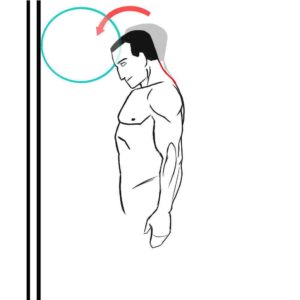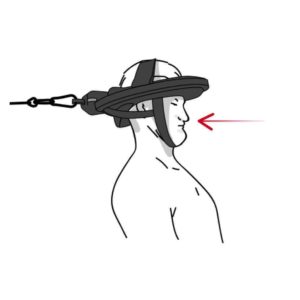Physical Therapy Exercises for Shoulder Stingers
As we are in the middle of football season, it is more common to hear about athletes experiencing shoulder stingers or burners. According to Sportsmd.com, a shoulder stinger or burner is an injury to a group of nerves known as the brachial plexus that extend from the spinal vertebrae C5 and continue through T1. Symptoms of a shoulder stinger include severe pain that radiates down the arm and may have degrees of numbness and weakness of the arm and neck pain. Injury to the brachial plexus often occurs as a result from a collision in contact sports which can compress or overstretch the brachial plexus. Besides football players, other athletes such as gymnast, skiers and cyclist can get stingers when they experience hard falls.
To prevent stingers, Sportsmd.com recommends building up your neck musculature. To build neck musculature, you can use an exercise ball to do neck extension, flexion and side bending exercises against a wall. Or you can buy exercise equipment like Iron Neck which are meant to specifically improve neck strength and mobility.
To treat a shoulder stinger, the Summit Medical Group recommends several exercises, some of which are shown below:
- Isometric Neck Flexion (In Neutral): With good posture, place your hand or fingers on the front of your forehead. Press your head into your hand or fingers as if you are trying to bend your chin down to your chest. Slow on, hold, then slow off. Do not cause any pain.
- Isometric Neck Extension (In Neutral): With good posture, place your hand behind your head. Press your head back into your hand. Slow on, hold, then slow off. Your therapist may advise you to perform this laying down pressing into a pillow. Do not cause any pain.
- Isometric Neck Side Bend (In Neutral): With good posture, looking straight ahead, place your hand or fingers on the side of your head. Press your head into your hand or fingers as if you are trying to bring your ear towards your shoulder. Slow on, hold, then slow off. Do not cause any pain.
- Shoulder Shrugs: Stand tall, raise both shoulders up to your ears simultaneously. Lower them back down. Repeat.
- Shoulder Abduction: Stand with your arms down at your sides. On your affected hand, point your thumb away from your body. Keeping your elbow straight, raise your affected arm out to the side so that your thumb points up. Pause, then slowly lower to starting position. Repeat.
Reminder: Please consult your physician or physical therapist before engaging in any physical activity and stop if you experience pain or discomfort.








